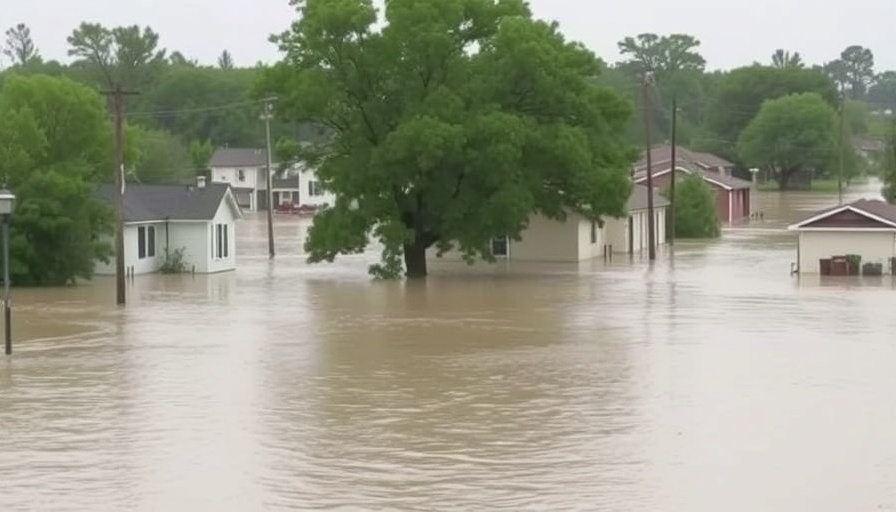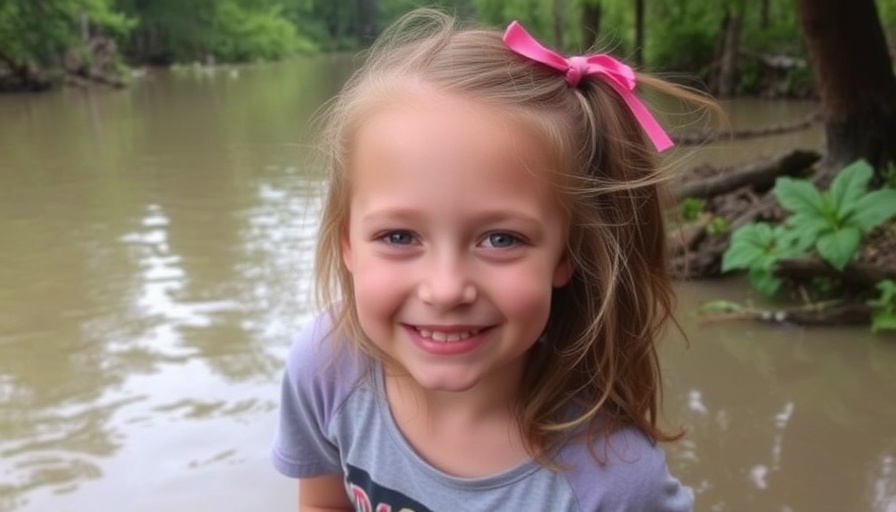
Tragedy Strikes Central Texas: A Flurry of Flash Floods
In the wake of catastrophic flash floods on July 4, Central Texas has been deeply affected, with the death toll rising to at least 119 as rescue teams continue the search for missing individuals. The storms swept through the Guadalupe River corridor, impacting communities from Kerr County to Travis County. Among the deceased, a particularly heartbreaking aspect is the loss of 30 children, with many of their bodies recovered from Camp Mystic, an all-girls summer camp where multiple fatalities occurred.
Central Government Response Amid Community Need
Governor Greg Abbott has been actively involved in the recovery efforts, reporting that 173 individuals are still unaccounted for. The vast majority of casualties have been reported in Kerr County, where teams are meticulously searching for missing campers, including a camp counselor and five girls. Many families are left shattered as they await news of their loved ones, leading to increased pressure on local authorities to account for those still missing.
Community and Relief Efforts on the Ground
In response to the devastating floods, officials have begun implementing relief programs. The Community Foundation of the Texas Hill Country has established a relief fund aimed at supporting vetted local response and recovery efforts. This fund is essential for providing aid where it is needed most. Donations made through this foundation are tax-deductible and will go directly to organizations working on the front lines, providing meals, shelter, and emotional support.
Understanding the Severity: Impacts Beyond Immediate Loss
The implications of flooding extend beyond loss of life, affecting local economies and livelihoods. Historic flooding incidents introduce unprecedented challenges to community resilience, from infrastructure damage to personal displacement. As Central Texas grapples with recovery from such a disaster, socioeconomic ramifications will be felt long-term. This includes disruptions in local businesses that depend on a stable environment to serve their customers.
Fostering Collaboration for Long-Term Recovery
As Texas bands together, collaboration among government agencies, charities, and community members is crucial. By fostering a culture of support, there is a potential to not only alleviate current suffering but also build a foundation for future resilience. People interested in assisting can contribute to local disaster relief funds or volunteer to support affected families.
Looking Ahead: What Can Be Done?
Having clear action plans in place for disasters greatly influences recovery efficiency. Community leaders are encouraged to establish preparedness training and public awareness campaigns to educate residents about flood safety and response protocols. Additionally, infrastructure improvements in flood-prone areas could mitigate the severity of future incidents, protecting lives and property.
A Call to Action: Involvement Matters
This catastrophic event has drawn attention to the need for individuals to engage in community relief efforts. Whether by donating time, resources, or finances, each contribution plays a vital part in aiding recovery efforts from the flooding.
In summary, the tragedy unfolding in Central Texas serves as a crucial reminder of the power of nature and the importance of collective action in times of crisis. By supporting local charities and government recovery initiatives, we can help bring relief to those who have lost so much.
 Add Row
Add Row  Add
Add 




 Add Row
Add Row  Add
Add 


Write A Comment